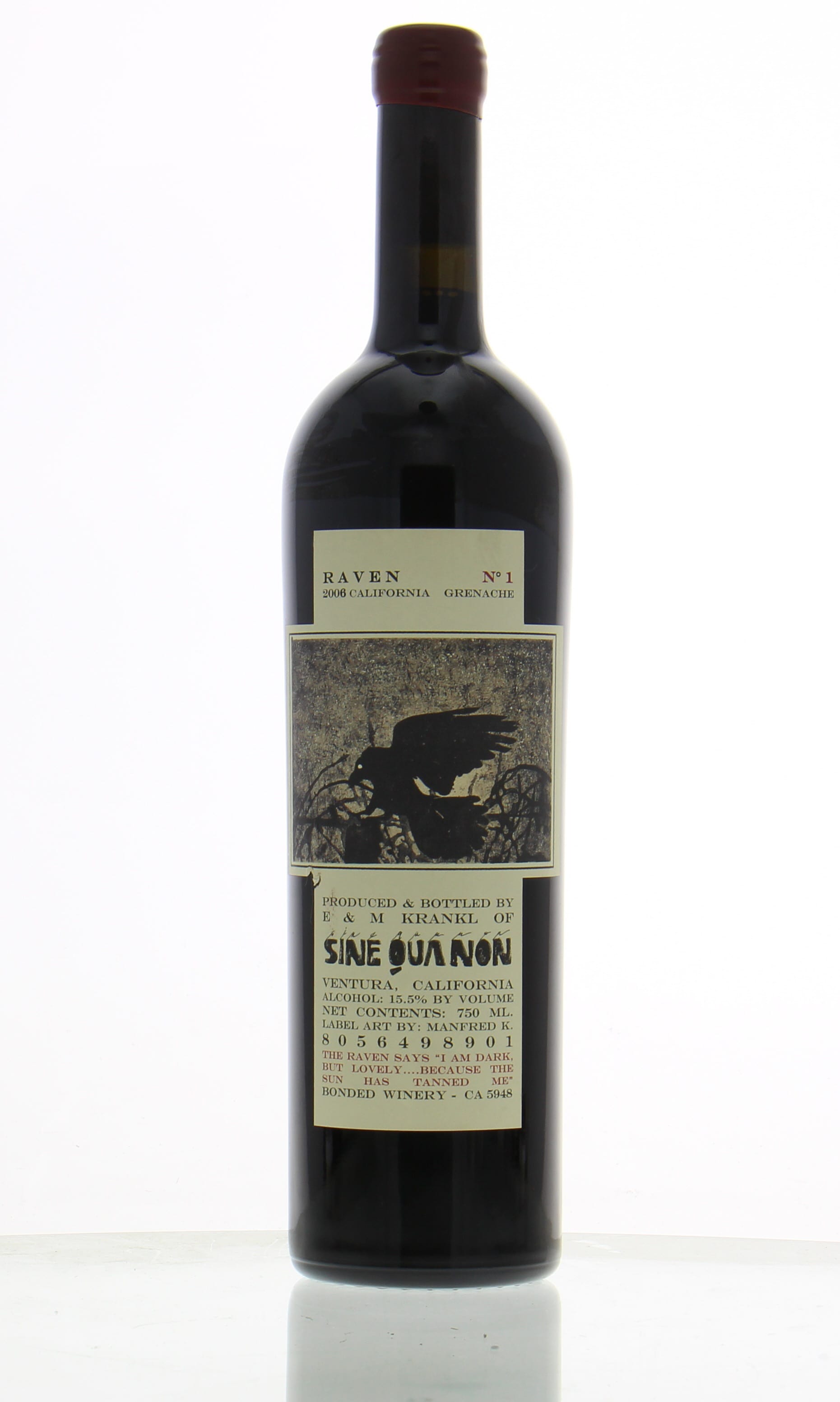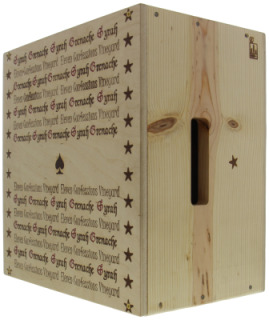Raven Series Syrah No 1 Grenache 2006 Sine Qua Non
| Klassifiziering | Cru Classe |
| Typ | Rotwein |
| Marke | Sine Qua Non |
| Jahrgang | 2006 |
| Land | Vereinigte Staten |
| Region | Napa Valley |
| Traube | Syrah/Shiraz, Grenache |
| Inhalt | 0,75 |
| Zustand | Aus Original Holz Kiste |
| Label | Perfekt |
| Vorrat | 0 |
Professionelle Bewertungen
Robert Parker (98)
2006 Ravens Series (# 6 and 7 Grenache): This blend of 90% Grenache and 10% Syrah, largely from the 11 Confessions Vineyard, with a small amount from Bien Nacido, spent 21 months in barrel. It is really strutting its stuff now, and showing even better than my original note predicted in August of 2009. The wine has loads of meat, licorice, smoke, charcoal and graphite, as well as huge peppery, blackberry and black cherry notes. Full-bodied, with great acidity, nicely integrated tannin, an admirable mouthfeel and tremendous length, this killer Grenache is still young and probably 3-5 years away from prime time drinking.
The conclusions I came to about this tasting may seem obvious just by reading the tasting notes. People forget that as famous as Sine Qua Non and both Elaine and Manfred Krankl have become over the last 15 years, their wines really only began to hit full world-class qualitative levels at the turn of the last century (2000). The vineyard sources have largely changed from Alban, Stolpman, Bien Nacido, Shadow Canyon and White Hawk Vineyards to primarily estate vineyards Cumulus Vineyard in Ventura County and 11 Confessions Vineyard in the Santa Rita Hills. In the future, Krankl’s newest vineyard in Alisos Canyon will be an additional component part. His meticulous craftsmanship and phenomenal attention to detail, both in the vineyard and in the winery, have been increasingly noticeable over the last decade. He seemed to hit full stride about eight or nine years ago, and what has unfolded since then is an absolutely brilliant succession of true works of genius, both in his expressive, sometimes slightly abstract artwork on the labels, to the meticulously crafted wood boxes in which the wines are housed. Of course, the most important thing of all, the actual wine itself, is both the beginning as well as the end for consumers, and where 100% of my focus and judgement are centered. Grenache, as Krankl would be the first to say, is by far the most challenging grape varietal to make majestic wine from, and unequaled in difficulty by any other grape in the world except Nebbiolo. That’s why we see so little of it from great terroirs. High quality Grenache exists in northern Spain, southern France, parts of southern Italy and Sardinia, and in southern Australia, but rarely in California. This makes Krankl’s achievement all the more remarkable. Regarding the article’s title, “Wasted” – I was so elated (by their quality) as well as depressed (because I couldn’t drink all of these elixirs) that it seemed as if too much wine had been “wasted.” On a light-hearted note, my condition once I finished the academic part of the tasting could have been described as “wasted” by those who still hold to the notion that alcohol is the demon drink.
Winespectator (97)
Deliciously complex, bold, rich and layered, with dark berry, plum, mocha and spice. Full-bodied and mouth-coating, this is dense without being heavy. Ends with a long, persistent finish.























